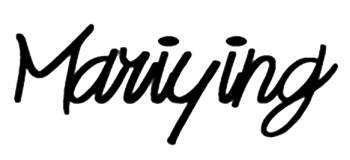Choosing the Right Paper for DIY Journals
When it comes to making a personalized journal, the type of paper you choose can make or break the experience. For those of us who have spent years crafting journals, sketchbooks, and planners, selecting the right paper is more than just a technical decision—it’s about the feel, the aesthetic, and the lasting quality of the final product. So, let’s dig into the nuances of paper choice and explore what works best in various DIY projects.
Why Paper Thickness Matters
For a hand-bound journal, you’ll want a paper that feels substantial in your hands. Avoid thin, flimsy sheets; they might be fine for printing but fall short in the tactile experience of flipping through a handmade book. Thicker paper, like heavyweight sketch paper or fine cotton sheets, not only adds durability but also gives a satisfying “snap” as you turn the pages. Generally, look for paper in the 100-120 gsm range or higher—anything thinner tends to be too delicate, prone to wrinkling or tearing under repeated handling.
The Charm of Cotton and Recycled Papers
For those aiming to make eco-conscious journals, cotton or recycled paper is an excellent option. Cotton paper, with its soft, textured feel, has a slight tooth that makes it a dream for writing or drawing with pen, pencil, or even light watercolor. It’s also more forgiving if you want to erase or paint over it. Recycled papers, on the other hand, often come with interesting textures and slight color variations, adding a rustic charm. Their durability and “green” appeal make them ideal for crafters who love a natural aesthetic.
Crafting Tip: Choose Paper That Matches Your Tools
This might sound basic, but it’s essential: if you’re going to be using specific pens, markers, or watercolors in your journal, pick paper that won’t bleed or warp. For instance, water-based markers often do best on smooth or semi-smooth surfaces to prevent feathering. If you plan to write or draw with fountain pens, a paper with a bit of coating can reduce ink bleed-through. On the flip side, rougher paper, like cold-pressed watercolor paper, absorbs ink well but may cause minor drag for certain pens.
Experiment with Different Finishes: Smooth, Textured, and Handmade
Smooth paper—often seen in high-quality planners—gives a clean, crisp writing experience and is excellent for detailed work. Textured paper, however, brings an artistic edge, creating a unique tactile experience that makes each stroke feel intentional. Handmade paper, with its uneven fibers and occasional inclusions (like tiny flecks or pressed leaves), adds an artisanal touch and is perfect if you’re aiming for a more organic, “wabi-sabi” look in your journal.
Avoid Bleed-Through: Test Before You Bind
Nothing is more frustrating than finishing a journal only to find that your pen bleeds through every page. Do a quick “bleed test” before committing to a particular paper. Grab your favorite pens, markers, or paints and test them on a single sheet of your chosen paper. This step might take a few extra minutes, but it’s worth it—especially if you want to avoid the disappointment of seeing ink seeping through multiple layers.
Paper Weight and GSM: Don’t Be Afraid to Go Heavier
For handmade journals, 100-120 gsm is often considered a baseline, but going up to 150 gsm or even 200 gsm can give your book a luxurious, substantial feel. Remember, though, heavier paper does mean a bulkier final product, which can be a beautiful effect if you’re aiming for a solid, “heirloom” journal. You may want to alternate between different weights in the same journal for variety—thicker pages for decorative sections, thinner ones for standard note-taking.
Embrace Imperfections, But Plan for Practicality
Finally, remember that the charm of DIY journals often lies in their imperfections. While it’s great to aim for clean edges and neat lines, a bit of waviness or texture can add character. Don’t be afraid to mix and match different types of paper for a layered, eclectic look. However, keep practicality in mind—too many types of paper with varying weights can affect binding, so aim for a balance between creative freedom and usability.
